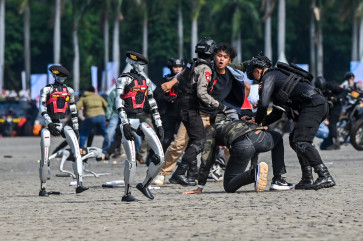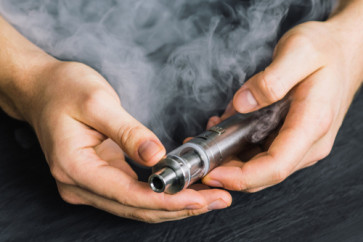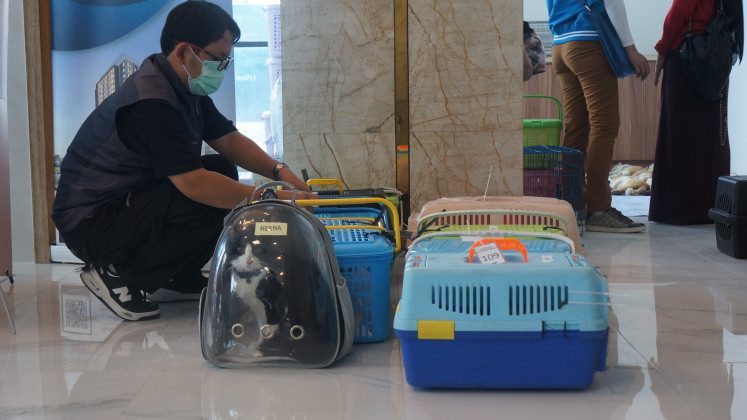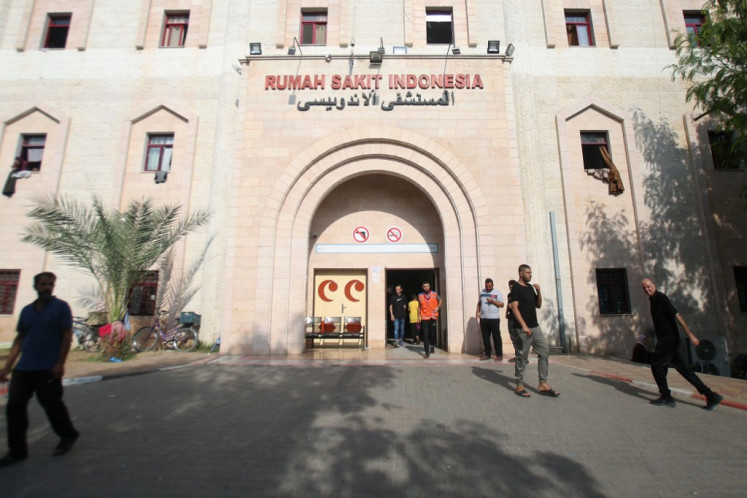Popular Reads
Top Results
Can't find what you're looking for?
View all search resultsPopular Reads
Top Results
Can't find what you're looking for?
View all search resultsHow high? How fast? How much? 5 questions about jetpacks
Change text size
Gift Premium Articles
to Anyone
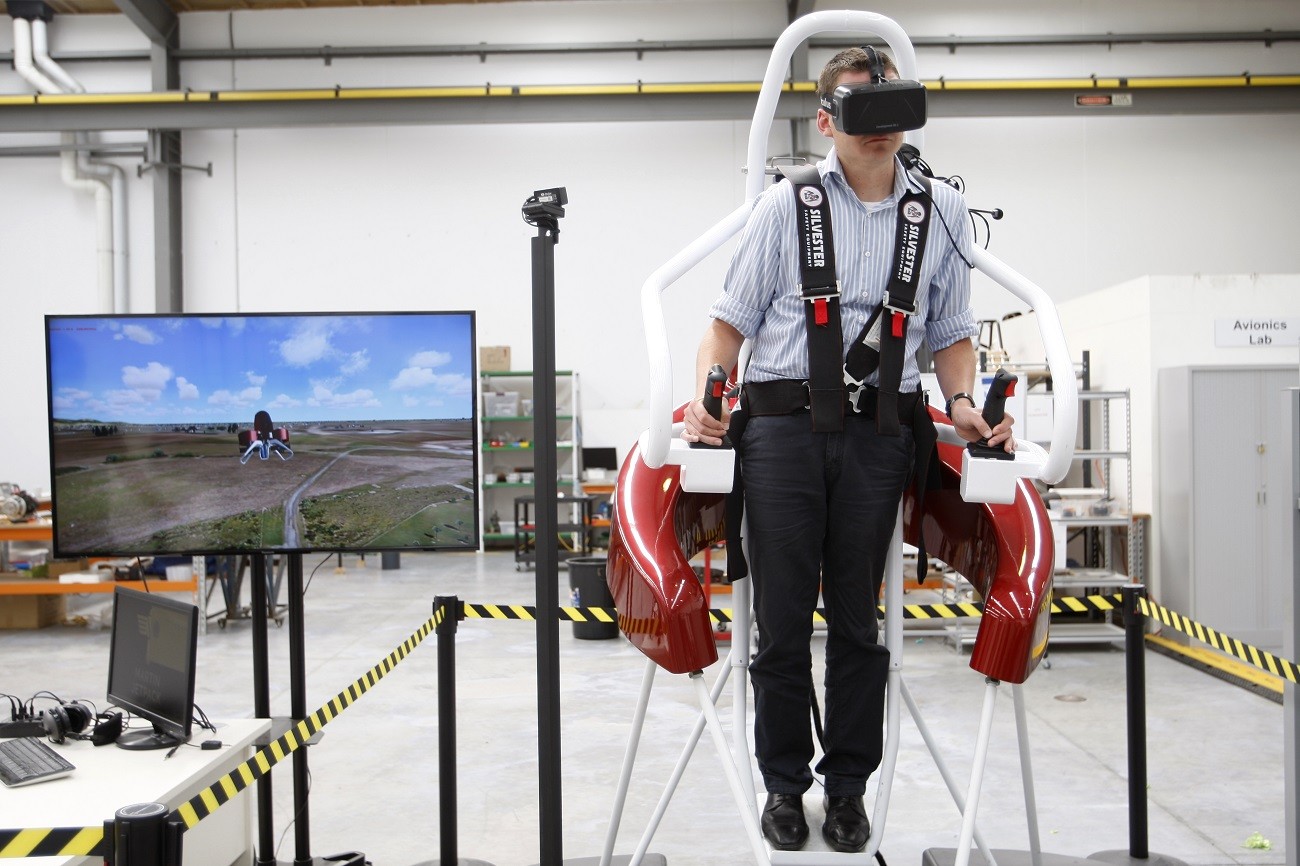 In this Feb. 9, 2016 photo, test pilot Michael van der Vliet operates a flight simulator at the Martin Aircraft Co. headquarters in Christchurch, New Zealand. The company says it’s close to commercial liftoff, but the man who started it fears his vision of a personal jetpack will remain grounded. (AP/Nick Perry)
In this Feb. 9, 2016 photo, test pilot Michael van der Vliet operates a flight simulator at the Martin Aircraft Co. headquarters in Christchurch, New Zealand. The company says it’s close to commercial liftoff, but the man who started it fears his vision of a personal jetpack will remain grounded. (AP/Nick Perry)
Some things about jetpacks that you didn't know you needed to know:
WHAT IS A JETPACK, EXACTLY?
The word "jetpack" is really a misnomer when it comes to the device being developed by the Martin Aircraft Co. That's because the Martin Jetpack gets its lift from twin ducted fans — think of a miniature helicopter with enclosed blades. And it's too big to be worn like a backpack, rather the pilot needs to strap in. The company says its jetpacks are maneuverable enough that somebody could fly one in and out of their own garage. Empty, the jetpack weighs about 200 kilograms (440 pounds). It's made from carbon-fiber and aluminum and powered by a piston engine which uses regular gasoline. One will cost about $200,000.
HOW HIGH AND HOW FAST?
Martin Aircraft says its jetpack can fly at up to 74 kilometers per hour (46 mph) at heights of up to 3,000 feet (900 meters), for a maximum duration of between 30 and 45 minutes. The pilot controls thrust, altitude and direction with two hand controls, similar to those on a motorbike. The "fly-by-wire" system is computer regulated. The jetpack also comes equipped with a ballistic parachute in case anything goes wrong.
 In this Feb. 9, 2016 photo, Martin Aircraft CEO Peter Coker stands next to a Martin Jetpack in Christchurch, New Zealand. The company says it’s close to commercial liftoff, but the man who started it fears his vision of a personal jetpack will remain grounded. (AP/Nick Perry)
In this Feb. 9, 2016 photo, Martin Aircraft CEO Peter Coker stands next to a Martin Jetpack in Christchurch, New Zealand. The company says it’s close to commercial liftoff, but the man who started it fears his vision of a personal jetpack will remain grounded. (AP/Nick Perry)
WHO CAN FLY ONE?
Martin Aircraft says its jetpacks are actually aircraft and so people will need a pilot's license to fly one. Pilots will need additional training on a jetpack simulator. Pilots will wear a flying suit, boots and a helmet. Inside the helmet, a radio system will allow pilots to converse with air traffic control in the same way as pilots on planes. Inventor Glenn Martin had hoped to keep the devices smaller and get them classified as ultralight aircraft, which in the U.S. don't require a license to fly.
WHEN CAN I GET ONE?
Probably not anytime soon. Martin Aircraft has a business plan to initially make jetpacks for first responders, which could be used for natural disasters, search and rescue missions, or even surf patrol. It plans to deliver the first prototypes to customers later this year. After that, Martin is looking at selling them to commercial operators such as the oil and gas industry and perhaps to the military. Recreational jetpacks are probably a few years away at least, and inventor Glenn Martin fears Martin Aircraft will never make one for personal use.
IS IT LEGAL TO FLY?
Jetpacks represent a new challenge for aviation authorities and may require the creation of an entire new category. The Martin Jetpack has been approved by New Zealand's Civil Aviation Authority for experimental flights but not yet for commercial use. The authority said it's working closely with Martin Aircraft as the company develops the jetpack to ensure Martin meets all necessary safety and technical requirements. Martin's CEO Peter Coker says it hopes to get certified in New Zealand and for authorities in other nations to use that as a template.


